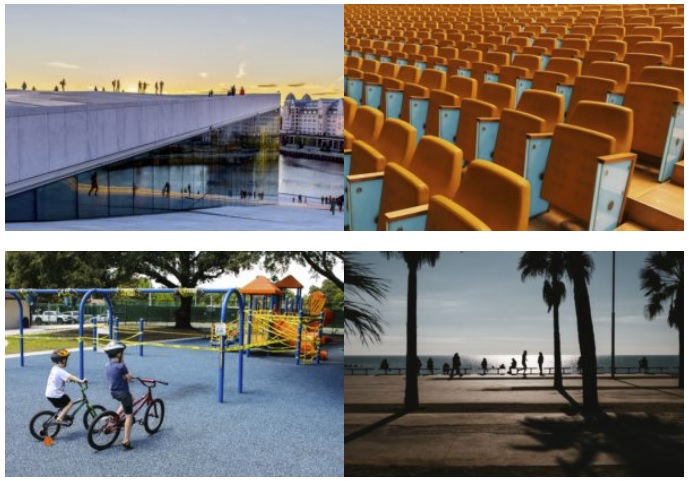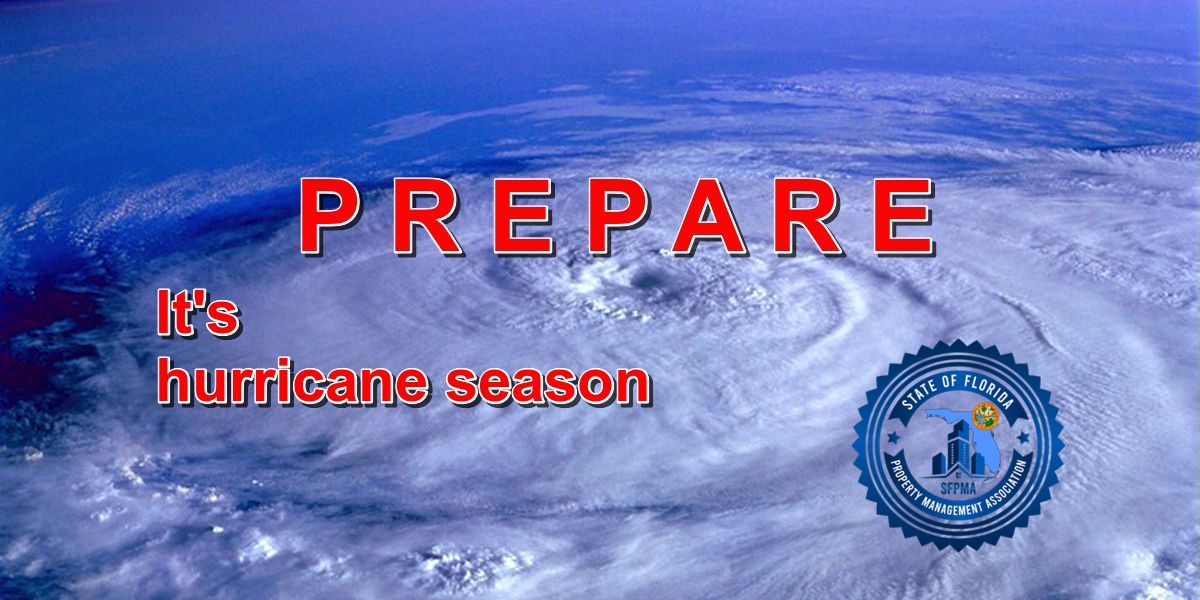Here’s how the coronavirus pandemic will impact hurricane season in Florida
COVID-19 forcing state to revisit evacuation, shelter plans
Preparing for hurricane season is always a daunting task for many Floridians, but with the coronavirus pandemic adding a few extra barriers, your preparations will likely require a few extra steps this year.
According to Eric Alberts, Orlando Health’s corporate director of emergency preparedness, thanks to COVID-19, there are quite a few extra things you’ll need to take into consideration and plan for before a storm.
For example, will you be able to find the supplies needed for your storm kit with stores sold out of certain items due to shoppers hoarding them during the pandemic? And if you’re one of the countless Floridians who is out of work because of the health crisis, how can you afford to properly prepare your home for a storm or repair damage still left behind from a previous one? Oh, and let’s not forget the price of insurance. What about shelters? What will those look like now that the CDC is asking everyone to practice social distancing?
We know those are probably just a few of the concerns you have, so News 6 anchor Ginger Gadsden spoke to Alberts to tackle them one by one and find out everything Floridians should consider when preparing for a storm.
Supplies
Let’s start by talking supplies.
Of course, you’ll need the items that have always been recommended in a hurricane kit – you can find a complete hurricane preparedness checklist available for download here – but that’s not all, according to Alberts.
“You can’t just think about having at least 72 hours of food and water, medications, flashlights, batteries and all that other stuff. You also have to think about your health,” Alberts said. You’re going to have to think through masks and whether you have additional masks, wipes or sanitary wipes. You’ve got to think through gloves in certain situations, protective clothing, in some regard.”
Some of the additional items Alberts listed, including masks and gloves, have been difficult to come across because of the coronavirus pandemic, which is why he recommends starting your supply search sooner rather than later.
“Start now and don’t wait until the hurricane’s here because you definitely won’t be able to get it then,” Alberts said. “And unfortunately, I don’t believe that these supply shortages are going to go away anytime soon. I think they’re going to last through at least the summer at some point.”
State officials have said they’re also taking this into consideration as they revisit their plans for hurricane season.
Division of Emergency Management Director Jared Moskowitz said his agency has arranged to add face masks to the state’s stockpile of storm supplies.
“We’re going to have 10 million masks in reserve by the time the hurricane season starts,” Moskowitz said. “And we signed a long-term deal with Honeywell to help get us 12 million N95 masks over the next year directly from the manufacturing plant, with a significant portion of that being delivered during hurricane season.”
Alberts said that even if the personal protective equipment shortages let up, it could still be difficult to find the right supplies because of shoppers who hoard them when they are available in fear of not being able to find them next time they need them (same goes for toilet paper, as we all know by now).
“Even if the items do begin to hit the market or go back on the market, some people will still do hoarding, they’ll still end up buying supplies for their families and their friends. They know they can’t get it and that will put a strain on the system for quite some time,” Alberts said.
Alberts said when it comes to hurricanes, the bottom line is: You need a lot of supplies. Add COVID-19 into the mix and you need even more. His best advice? Start gathering those items now, because they may only be more difficult to find when you actually need them.
Preparing your loved ones
Alberts said it’s important to not only get supplies and plans in order for yourself but also those with whom you live and others you might care for, especially if they have any special needs.
With many still feeling on edge because of the pandemic, it may be difficult to have the conversation, but Alberts said it’s important you don’t want to prepare your family’s emergency plan.
“Now’s the best time to get your kit and your plan together. So what I mean by that is, you know, you live with others, whether it be your significant other, your family or friends. Just get them together and just sit down and talk to them,” Alberts said.
While building your plan, Alberts said you should ask yourselves, “What is it we’re going to do if we experience a tropical storm or hurricane soon or later in this season?”
From there, he recommends you start writing things down and finalizing a game plan that you’ll all be ready to put into action at any given time.
“Whatever you talked about or you wrote down, make sure you actually do it. People need plans, they need education, they need training. And if you don’t have that, then you feel weakness, you feel fear, and you feel susceptible to rumors, and chaos and stress,” Alberts said.
He said having that plan in place and knowing everyone is on the same page will help ease some of the anxieties that could come with uncertainty in the future.
If anyone in your family has special health needs, Alberts said you’ll want to keep those in mind and include any extra steps you might need to care for them in the event of an emergency in your family’s plan.

Can’t decide on what type of shutters to get?
Accordion shutters are among the most practical types of window coverings because they are strong enough to offer hurricane protection.
They are made of aluminum allowing them to shield windows from heavy winds!
Contact us today at (954) 786-7292 or
visit our website www.aruba-services.com and we can help you with your new shutters!
Alberts recommends individuals with special needs register with the Florida Special Needs Registry.
He said doing so will inform local officials that a member of the community is at risk and allows them to reach out before a storm and make sure the individual with special needs is safe. Officials can also reach out to those who are registered to follow up with them after a storm.
Caring for the elderly
Just as you should for other members of your family, Alberts recommends keeping the care of any elderly family members a priority in your preparedness plan.
Get any medication and other needed supplies in order ahead of time so they’re ready if and when your family needs to evacuate.
If your loved one is a resident at a long-term care facility, Alberts recommends having storm prep conversations with those who work at the facility, especially in the months following the COVID-19 pandemic, with visitations temporarily paused to protect the health of the most vulnerable population.
“Well, it really depends on where we’re at in response to COVID-19. They may still be in the status of not allowing others into their facilities. So if that’s the case, you really end up having to trust the management and the administration of that facility to do the right thing for your loved one. And you always have the right to call them and ask for their administration,” Alberts said.
He said you should ask the administration at the facility about their plans for emergencies so that, if you’re uncomfortable with them, you have time to make changes.
“I hate to say it this way, but put some pressure on them if you don’t feel comfortable with their actions. You know, if there’s a tropical storm or hurricane coming directly at that facility and you don’t feel safe with them being there, then you can really impress upon them how you feel and that your loved one really needs to be moved somewhere else,” Alberts said.
Alberts said don’t be afraid to call and ask to speak with the facilities’ leadership because the person at the front desk may not have all the answers.
He said to call and ask if you should drop off any extra tissues, sanitary or moisturizing cloths or even medication to let them know you’re planning for the care of your family member and they should step up their planning efforts, too.
Preparing your home
It’s not uncommon to drive around Florida and see blue tarps on homes months after a major storm hits part of the area. Something you don’t want to see, though, according to Alberts: Blue tarps still being used as we enter the next storm season.
Alberts said Floridians should work to have any home repairs completed by the time hurricane season arrives so that their home can better weather the next storm.
With many Floridians unemployed due to the pandemic, covering those repair costs may be difficult to impossible for anyone struggling to make ends meet.
Alberts’ advice is to financially plan as much as possible and look for any opportunities to save so that you have some extra funds available in the event of an emergency.
“One of the recommendations is to have additional monetary savings with you so that you’re able to pay for response and recovery efforts,” Alberts said.
Some people will opt out of insurance to save some money when their budget is tight, but Alberts said that presents its own set of risks and could actually cost you more down the road, should a storm damage your home.
“When you’re low on financial or monetary funds, you often think, ‘Hey, can I just not pay this insurance?’ or, ‘Hey, I don’t need this anymore,’ but with that comes a lot of additional risks or hazards or threats to your own financial well-being, right?” Alberts said. “So if you have damage at your home, or even your business, how are you going to go ahead and pay for that if you don’t have the necessary insurance?”
Safely seeking shelter
If you’ve ever visited a storm shelter while a hurricane was threatening Florida, you know they can get pretty crowded.
With social distancing now required or strongly encouraged in most places and COVID-19 still expected to be around through hurricane season, public shelters will likely look different than they have in the past, according to Alberts.
“When you think of shelters for hurricanes, and you’ve seen pictures or videos before, you’ll probably see a lot of mass gatherings of people for extended periods of time. Well, we can’t really do that now with COVID-19,” Alberts said. “So, you know, local, state and federal partners are really looking at the sheltering models to say, ‘Hey, what can and should we do in our shelters (to) minimize the impact of COVID-19 on the shelter as well?’”
Moskowitz said Florida emergency officials have been working with FEMA to revise their plans for evacuations and shelters.
In early May, state officials said they were looking at protocols for shelters that range from separating people based on temperature checks to non-congregated sheltering in hotels.
FEMA has since released its COVID-19 Pandemic Operational Guidance for the 2020 Hurricane Season, which outlines how the agency plans to adapt its response and recovery efforts in light of COVID-19.
Alberts said when it comes to evacuating to a shelter, Floridians should keep the following tips in mind:
“If it’s a shelter, just make sure you follow social distancing with COVID-19 and just take your extra precautionary measures with your personal protective equipment. Make sure that you’ve got your required medications and you’ve got your legal documents, any kind of insurance and identification. Make sure those are in a waterproof sealable bag because you don’t want to be hunting for those whenever it’s time to leave,” Alberts said.
Plan ahead
Alberts said planning for a hurricane requires a lot of preparation and supplies, and planning for storm season with a pandemic still underway requires even more. The most important thing Floridians can do to make sure they’re ready for hurricane season, according to Alberts, is plan ahead.
“The recommendation there is to start building your plan now, start building your kit now. Don’t wait until a hurricane is knocking at the door so to speak, you know, start the efforts now to get the supplies that you need. Don’t wait.”
Like this:
Like Loading...
Tags:
Condo and HOA Reserves,
Management News
 On June 8, Miami-Dade County allowed fitness centers/gyms to reopen. A look at how one building reopened can provide valuable lessons. The Continuum is a 523-unit luxury condominium in South Beach managed by Marquis Association Management, and it is using a suite of products from BuildingLink to keep residents safe and reduce liability.
On June 8, Miami-Dade County allowed fitness centers/gyms to reopen. A look at how one building reopened can provide valuable lessons. The Continuum is a 523-unit luxury condominium in South Beach managed by Marquis Association Management, and it is using a suite of products from BuildingLink to keep residents safe and reduce liability.










 Lakes, ponds and wetlands are valuable resources for boating and recreation, fishing, drinking water, stormwater collection, aesthetic beauty and wildlife habitat. But they also serve as common breeding grounds for pesky insects like aquatic midge flies, often referred to as “midge bugs” or “blind mosquitoes.” Midge flies belong to a very large and diverse family of aquatic insects. While often thought of as the “cousin” of
Lakes, ponds and wetlands are valuable resources for boating and recreation, fishing, drinking water, stormwater collection, aesthetic beauty and wildlife habitat. But they also serve as common breeding grounds for pesky insects like aquatic midge flies, often referred to as “midge bugs” or “blind mosquitoes.” Midge flies belong to a very large and diverse family of aquatic insects. While often thought of as the “cousin” of  Managing midge fly populations below nuisance levels requires an integrated approach to achieve successful long-term control—starting with bathymetric mapping of the habitat and a professional larvae assessment. Midge larvae surveys are crucial tools to determine which midge species are present and how to effectively manage them.
Managing midge fly populations below nuisance levels requires an integrated approach to achieve successful long-term control—starting with bathymetric mapping of the habitat and a professional larvae assessment. Midge larvae surveys are crucial tools to determine which midge species are present and how to effectively manage them.




 Kaye Bender Rembaum attorneys Michael S. Bender and Jeffrey A. Rembaum will be a part of a panel discussion presented by Castle Group, in Episode 2 of “Association Continuity and Other COVID-19 Concerns.” There will be a special focus on the re-opening of community amenities.
Kaye Bender Rembaum attorneys Michael S. Bender and Jeffrey A. Rembaum will be a part of a panel discussion presented by Castle Group, in Episode 2 of “Association Continuity and Other COVID-19 Concerns.” There will be a special focus on the re-opening of community amenities. Kaye Bender Rembaum, Attorneys at Law
Kaye Bender Rembaum, Attorneys at Law